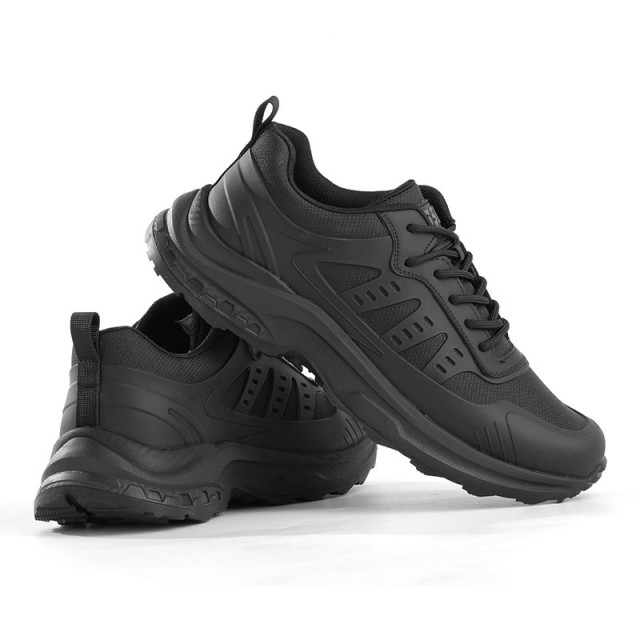Workplace safety begins from the ground up—literally. Selecting the right safety shoes isn’t about generic protection; it’s about precisely matching footwear features to the specific hazards in your environment. Whether you’re navigating electrical risks, sharp debris, or slippery surfaces, this guide breaks down a systematic approach to choosing safety shoes that mitigate real-world dangers.
Choosing Safety Shoes for Hazard-Specific Environments
Identifying Workplace Risks: Physical, Chemical, and Electrical Threats
Start with a hazard audit. Before browsing safety shoes, map out the risks in your work environment:
-
Physical Hazards
- Heavy objects (e.g., construction sites, warehouses) require toe protection (steel/composite caps) and impact-resistant soles.
- Sharp debris (nails, glass) demands puncture-resistant midsoles (marked with a green triangle and "PR" symbol).
-
Chemical Exposure
- Oil, acids, or solvents necessitate hydrocarbon-resistant soles (labeled "Fo" under ISO 20345) and waterproof uppers ("Wru" or "Wr" certification).
-
Electrical Risks
- Live wires or high-voltage areas call for non-conductive materials (ASTM F2413-compliant shoes that block up to 18,000 volts).
Pro Tip: Combine hazard analysis with job role dynamics. For example, electricians need electrical hazard (EH) protection and slip resistance if working on elevated platforms.
Key Protective Features: Material, Design, and Certification Alignment
Safety shoes are only as reliable as their certifications. Here’s how to decode labels:
-
Toe Protection:
- Steel toes (200-joule impact resistance): Best for heavy industries.
- Composite toes: Lighter and non-metallic, ideal for electrical hazards or cold environments.
-
Sole Technology:
- Slip resistance (ISO 20345 SRA/SRB/SRC): SRC-rated soles perform best on greasy and wet surfaces.
- Puncture resistance (PR): Look for thick, layered midsoles that stop sharp objects.
-
Material Compatibility:
- Electrical Hazard (EH): Avoid metal components; opt for rubber or dielectric materials.
- Chemical Resistance: Nitrile or polyurethane outsoles resist oil and acids.
Case in Point: A 2022 update to ISO 20345 tightened slip-resistance testing. Shoes certified post-update undergo stricter greasy-surface trials.
Real-World Applications: Industry-Specific Shoe Selection Strategies
Tailor choices to your sector’s top risks:
-
Construction:
- Prioritize puncture resistance + ankle support (high-cut boots).
- Example: A steel-toe boot with PR midsoles and oil-resistant outsoles.
-
Manufacturing:
- Combine static-dissipative soles (to prevent sparks) with metatarsal guards.
-
Healthcare/Laboratories:
- Slip-resistant soles (SRA rating) and lightweight designs for long shifts.
Mythbuster: "All safety shoes are bulky." Modern designs integrate protection with ergonomics—like athletic-style EH sneakers for electricians.
Ready to Equip Your Team with Precision-Engineered Safety?
3515 specializes in manufacturing safety footwear tailored to your hazard profile. From electrical hazard-resistant boots to chemical-proof designs, we help distributors and bulk buyers source certified protection without compromise.
Next Step: Audit your workplace risks, then contact 3515 for a curated selection matching your safety standards.
Because the right shoe doesn’t just protect feet—it safeguards productivity.
Products You Might Be Looking For:
Explore customizable safety footwear for workplace hazards
Related Products
- Wholesale Customizable Suede Safety Boots - Puncture-Proof with Velcro Closure
- Puncture-Resistant Velcro Safety Boots for Wholesale & Custom Manufacturing
- Customizable Anti-Smash Safety Boots for Wholesale & Private Label Manufacturing
- Wholesale Durable Camo Canvas Shoes with High-Traction Rubber Soles
- Durable High-Traction Canvas Sneakers Wholesale & Custom Manufacturing
Related Articles
- How Safety Work Boots Engineer Protection: Features and Standards for Targeted Hazard Mitigation
- How to Choose Work Boots That Match Your Job Demands and Safety Needs
- How to Choose Work Boots That Match Your Job's Safety Demands
- How to Extend Work Boot Lifespan: Science-Backed Care for Safety & Savings
- Matching Men’s Work Shoe Safety Technologies to Workplace Hazards



















